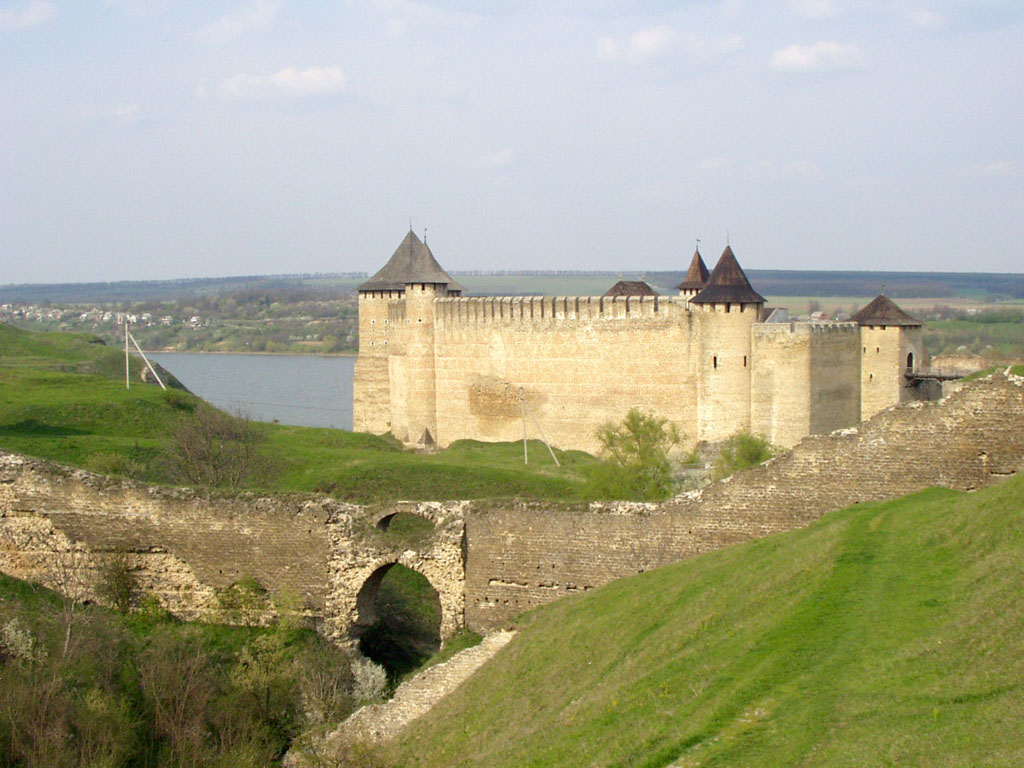|
Siege Of Khotin (1788)
In the siege of Khotyn (Khotin, Hotin; 2 July – 19 September 1788) a Habsburg Austrian army led by Prince Josias of Saxe-Coburg-Saalfeld and an Imperial Russian army commanded by Ivan Saltykov besieged an Ottoman Turkish garrison in the fortress of Khotyn. The Allies eventually forced the surrender of the fortress. The siege was part of the Austro-Turkish War and the Russo-Turkish War. Siege An Austrian army of 18,000 men under Prince Josias of Saxe-Coburg-Saalfeld marched from Bukovina Bukovinagerman: Bukowina or ; hu, Bukovina; pl, Bukowina; ro, Bucovina; uk, Буковина, ; see also other languages. is a historical region, variously described as part of either Central or Eastern Europe (or both).Klaus Peter BergerT ... to lay siege to Khotyn. It was joined by a Russian army under Ivan Saltykov. The Turkish garrison led by the Pasha of Khotyn held out for more than two months before capitulating. Under the terms of surrender, any resident of Khotyn who wishe ... [...More Info...] [...Related Items...] OR: [Wikipedia] [Google] [Baidu] |
Austro-Turkish War (1788–1791)
The Austro-Turkish War was fought in 1788–1791 between the Habsburg monarchy and the Ottoman Empire, concomitantly with the Russo-Turkish War (1787–1792), Russo-Swedish War (1788–1790) and Theatre War. It is sometimes referred to as the Habsburg–Ottoman War or the Austro-Ottoman War. War aims The war began as a Russian-Turkish conflict. The Russian Empire, headed by Catherine the Great, had been involved in History of the Russo-Turkish wars, previous wars of conquest against the Ottomans, and the two nations were openly hostile. In August 1787, after "numerous Russian provocations" according to Hochedlinger, the Ottoman Empire declared war on the Russians.Hochedlinger (2003:382) The Austrian Emperor Joseph II, Holy Roman Emperor, Joseph II had concluded Austro-Russian alliance, an alliance with the Russians in 1781, which (Hochedlinger) "obliged [him] to assist the Russians with his full might ... Vienna felt that it had to act promptly so as not to annoy the [Empress]. ... [...More Info...] [...Related Items...] OR: [Wikipedia] [Google] [Baidu] |
Ivan Saltykov
Count Ivan Petrovich Saltykov (russian: Иван Петрович Салтыков; 28 June 1730 – 14 November 1805) was a Russian Field Marshal, the Governor-General of Moscow from 1797 to 1804, and owner of the grand estate of Marfino. Biography Ivan was the only son of Field-Marshal Pyotr Semyonovich Saltykov. He began military service at the age of 15 in the Semenovsky Regiment at the rank of private. In 1758 he was inducted into the Imperial Court at the junior rank of Kamer-Junker. During the Seven Years' War Saltykov distinguished himself at the capture of both Königsberg and Elbing, and at the Battle of Zorndorf. After the onset of peace he received a promotion to major general and was decorated with the Order of St. Anna, 2nd class by Peter III. At Catherine the Great's coronation, he was awarded the Order of St. Alexander Nevsky. At the start of the Russo-Turkish War of 1768–1774 the now Lieutenant-General Saltykov served under the command of Rumyantsev at ... [...More Info...] [...Related Items...] OR: [Wikipedia] [Google] [Baidu] |
Sieges Involving The Ottoman Empire
A siege is a military blockade of a city, or fortress, with the intent of conquering by attrition, or a well-prepared assault. This derives from la, sedere, lit=to sit. Siege warfare is a form of constant, low-intensity conflict characterized by one party holding a strong, static, defensive position. Consequently, an opportunity for negotiation between combatants is common, as proximity and fluctuating advantage can encourage diplomacy. The art of conducting and resisting sieges is called siege warfare, siegecraft, or poliorcetics. A siege occurs when an attacker encounters a city or fortress that cannot be easily taken by a quick assault, and which refuses to surrender. Sieges involve surrounding the target to block the provision of supplies and the reinforcement or escape of troops (a tactic known as "investment"). This is typically coupled with attempts to reduce the fortifications by means of siege engines, artillery bombardment, mining (also known as sapping), or the use ... [...More Info...] [...Related Items...] OR: [Wikipedia] [Google] [Baidu] |
Sieges Involving The Russian Empire
A siege is a military blockade of a city, or fortress, with the intent of conquering by attrition, or a well-prepared assault. This derives from la, sedere, lit=to sit. Siege warfare is a form of constant, low-intensity conflict characterized by one party holding a strong, static, defensive position. Consequently, an opportunity for negotiation between combatants is common, as proximity and fluctuating advantage can encourage diplomacy. The art of conducting and resisting sieges is called siege warfare, siegecraft, or poliorcetics. A siege occurs when an attacker encounters a city or fortress that cannot be easily taken by a quick assault, and which refuses to surrender. Sieges involve surrounding the target to block the provision of supplies and the reinforcement or escape of troops (a tactic known as "investment"). This is typically coupled with attempts to reduce the fortifications by means of siege engines, artillery bombardment, mining (also known as sapping), or ... [...More Info...] [...Related Items...] OR: [Wikipedia] [Google] [Baidu] |



